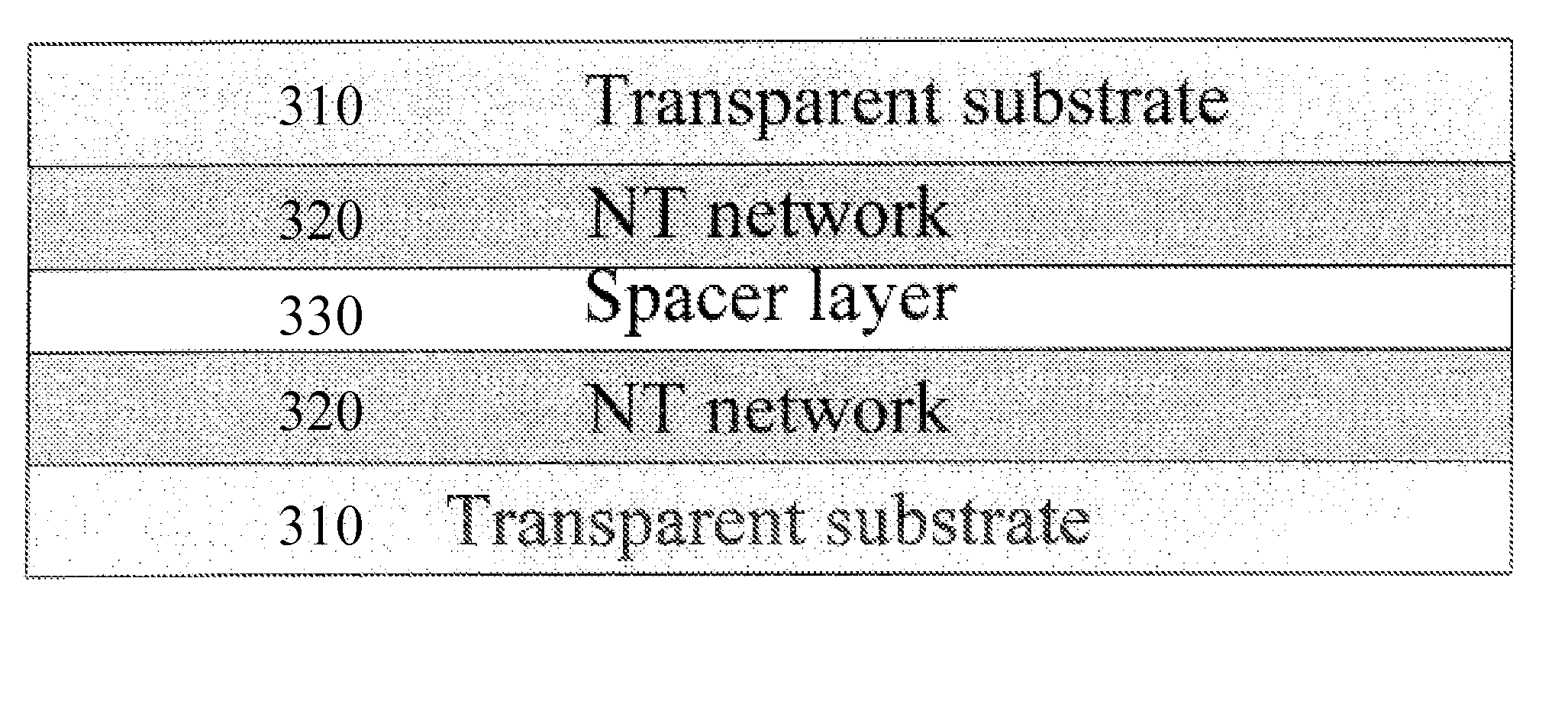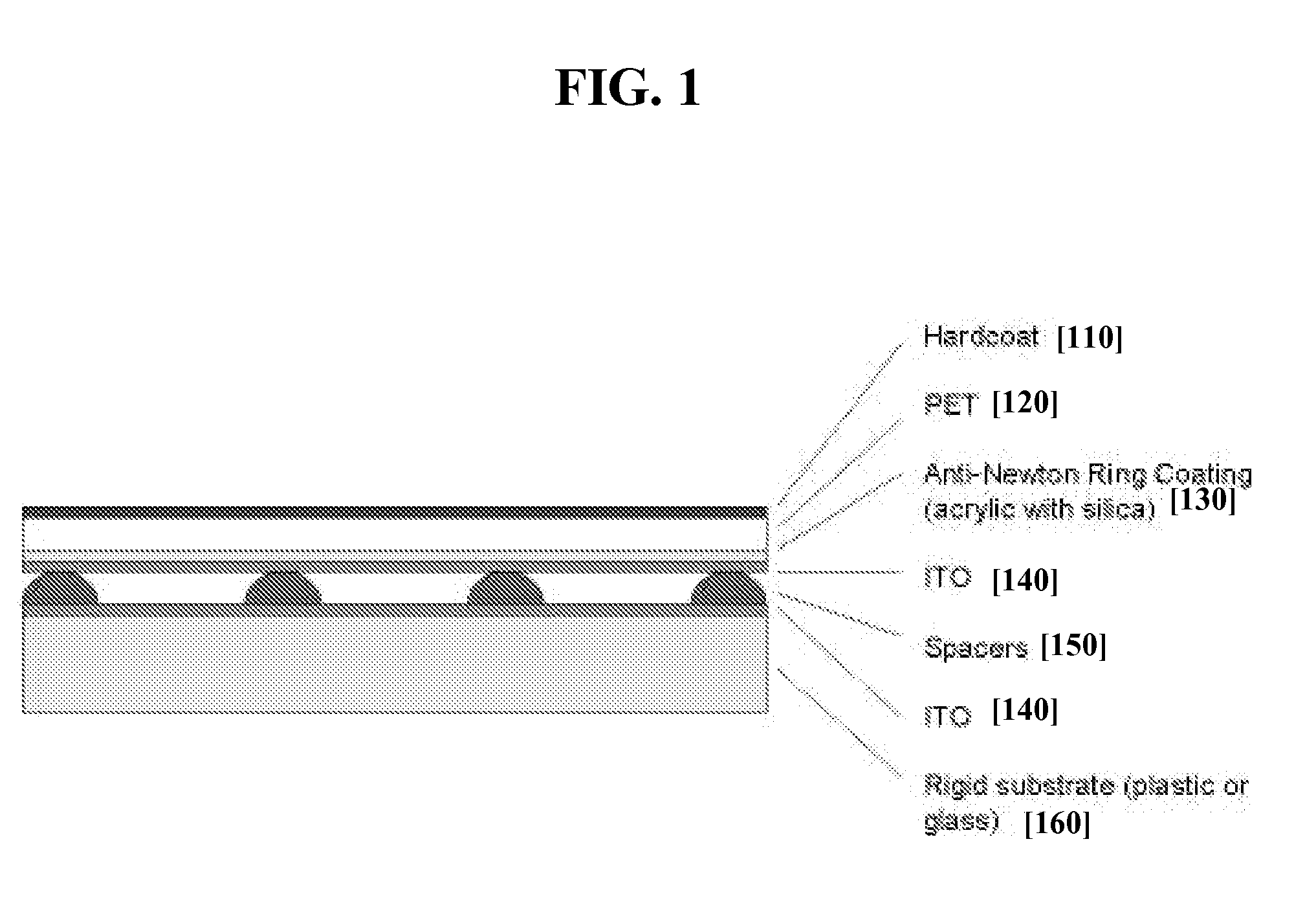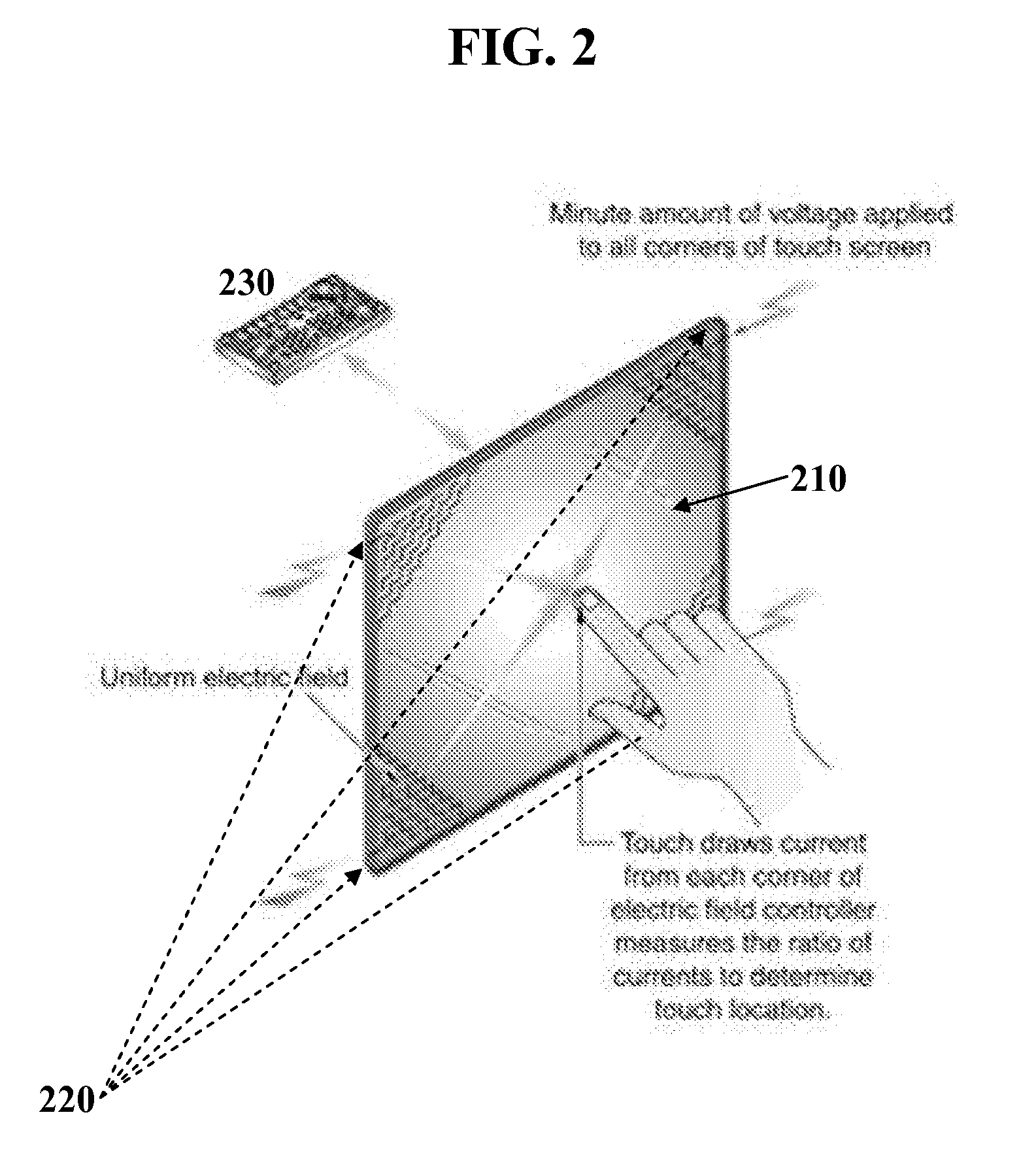Touch screen devices employing nanostructure networks
a nanostructure network and touch screen technology, applied in the field of touch screen display, can solve the problems of 75% clarity, the indium component of ito is rapidly becoming a scarce commodity, and the transparent layer can be easily damaged by sharp objects
- Summary
- Abstract
- Description
- Claims
- Application Information
AI Technical Summary
Benefits of technology
Problems solved by technology
Method used
Image
Examples
Embodiment Construction
[0029]Referring to FIG. 1, a resistive touch screen display comprises a transparent substrate 160 (e.g., plastic or glass) covered with two transparent conductive layers 140 separated by an array of insulating spacers 150. The top transparent conductive layer is often covered by an anti-Newton ring coating 130 (e.g., acrylic with Silica) and packaged with a transparent plastic layer 120 (e.g., PET) and hardcoat 110.
[0030]While the display is operational, an electrical current runs through the two transparent conductive layers 140. When a user touches the display, e.g., by pushing down on the hardcoat, the layers above the spacers deform and the two transparent conductive layers 140 make contact at an underlying point. The resulting change in the electrical field at that point is detected and the coordinates of the point are calculated by a computer.
[0031]Although the transparent conductive layers most commonly consist of Indium-tin-oxide (ITO), ITO is relatively brittle and is there...
PUM
 Login to View More
Login to View More Abstract
Description
Claims
Application Information
 Login to View More
Login to View More - R&D
- Intellectual Property
- Life Sciences
- Materials
- Tech Scout
- Unparalleled Data Quality
- Higher Quality Content
- 60% Fewer Hallucinations
Browse by: Latest US Patents, China's latest patents, Technical Efficacy Thesaurus, Application Domain, Technology Topic, Popular Technical Reports.
© 2025 PatSnap. All rights reserved.Legal|Privacy policy|Modern Slavery Act Transparency Statement|Sitemap|About US| Contact US: help@patsnap.com



